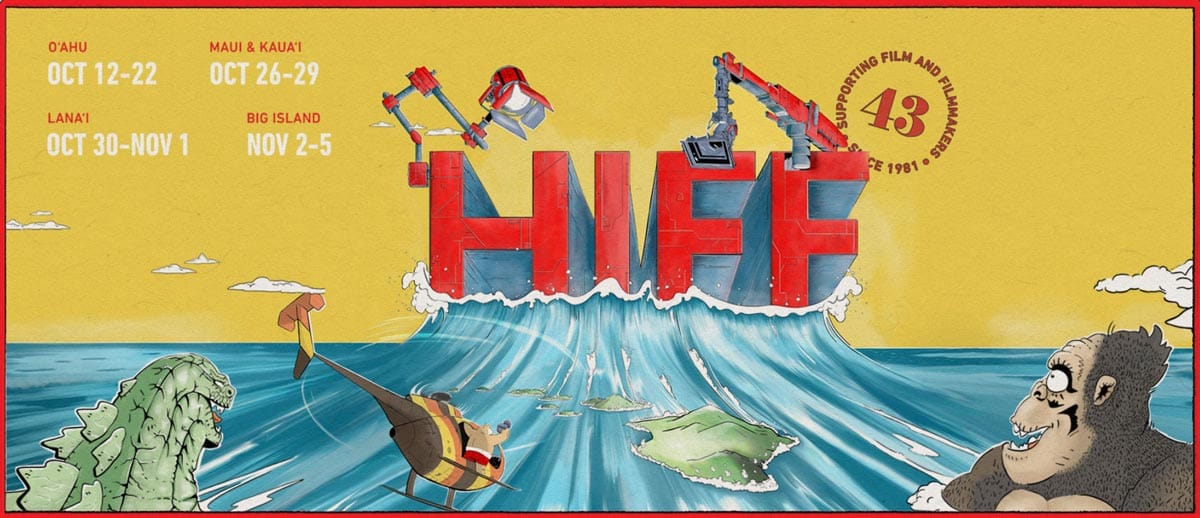
The Vilcek Foundation is proud to present the New American Perspectives program at the 43rd Annual Hawai’i International Film Festival (HIFF) in Honolulu this October. New American Perspectives shines a spotlight on the valuable perspective that immigrant, foreign-born and first-generation American filmmakers bring to contemporary cinema in the United States. The program, presented in partnership with HIFF, includes a master class, filmmaker discussions and panels, film screenings and classroom presentations in local schools.
New American Perspectives is underwritten by a grant from the Vilcek Foundation to HIFF to bring immigrant and first-generation American filmmakers and their work to the festival.
Films and Filmmakers
At the 2023 festival this October, we are delighted to share new work by and programs with:
- Geoff McFetridge (b. Canada, of Chinese and Canadian descent)
- Sing J. Lee (b. United Kingdom, of Hong Kong descent)
- Nickzad Nodjoumi (b. Iran)
- Sara Nodjoumi (b. United States to Iranian parents)
- Till Schauder (b. United States to German parents)
- Chiaki Yanagimoto (b. Japan)
- Denise Zmekhol (b. Brazil)
In the coming weeks, we will publish individual profiles on each of our featured New American Perspectives filmmakers and their films. The full schedule of HIFF 2023 programs is available at HIFF.org.
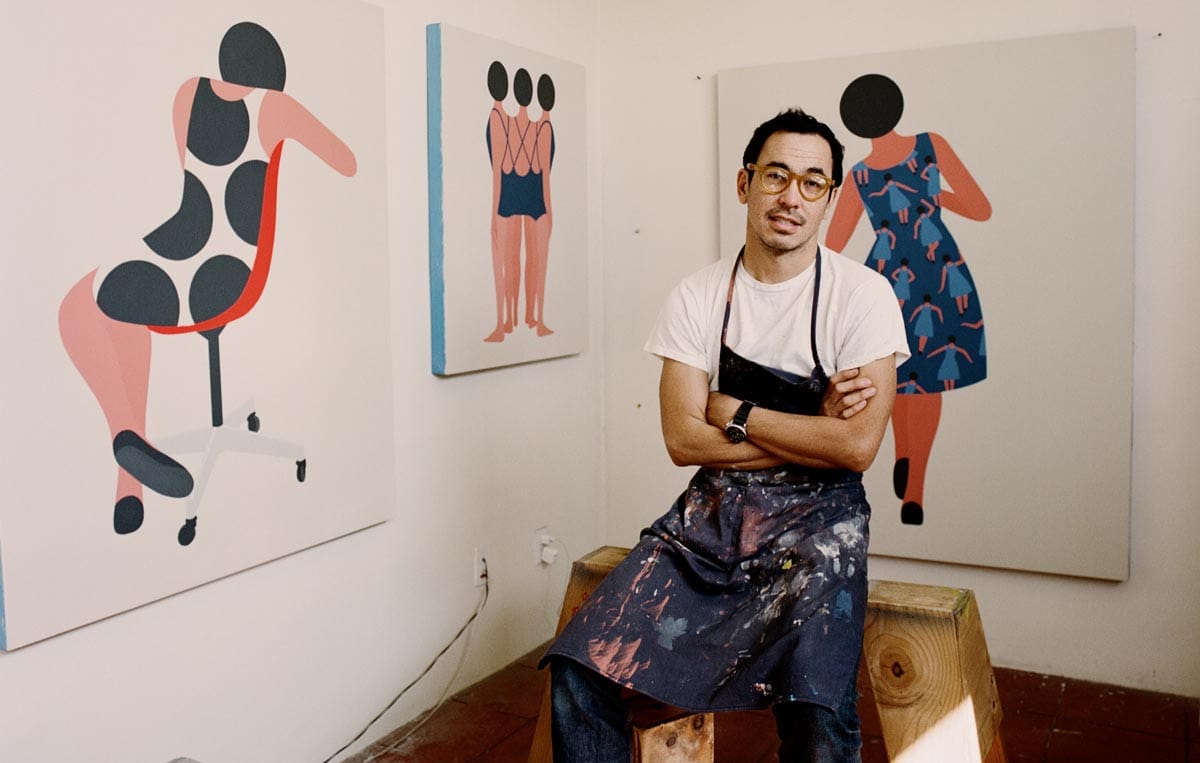
Geoff McFetridge: Drawing a Life
Geoff McFetridge (b. Canada, of Chinese and Canadian descent), artist and subject
Artist and designer Geoff McFetridge found drawing as an outlet early in life, using the steadiness of the pencil and the simplicity of line to tame his mind and make sense of the world around him. After attending CalArts, he expanded into printmaking and graphic design, working with indie magazines and filmmakers Spike Jonze and Sofia Coppola while finding and establishing his voice as an artist. His work is now ubiquitous, with his bold graphic style embraced by companies from Apple to Warby Parker. Directed by Dan Covert and executive produced by Spike Jonze, Drawing a Life explores the artist’s life and process—from inspiration to actualization.
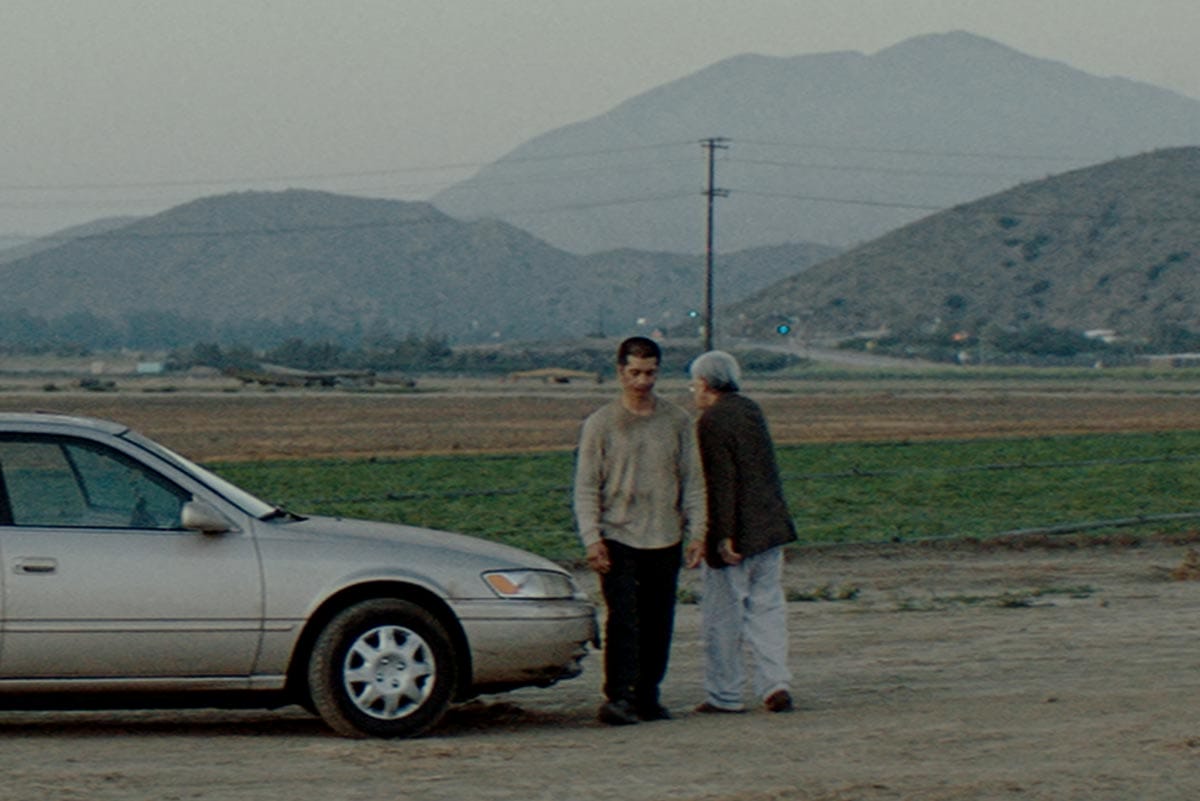
The Accidental Getaway Driver
Sing J. Lee (b. United Kingdom, of Hong Kong descent), director and screenwriter
The Accidental Getaway Driver is director Sing J. Lee’s first feature film. This dramatic narrative, based on a true story, showcases Lee’s talent for subtle and layered emotional storytelling. The Accidental Getaway Driver follows Vietnamese American taxicab driver Long Ma as he picks up and is subsequently held hostage by three recent escapees from an Orange County, California, jail. The film deftly explores Ma’s and his captors’ isolation, and the aspects of identity, belonging, and fear that can bring people together and drive them apart. The film had its U.S. premiere at the 2023 Sundance Film Festival, where Lee received the Directing Award for U.S. Dramatic Feature.
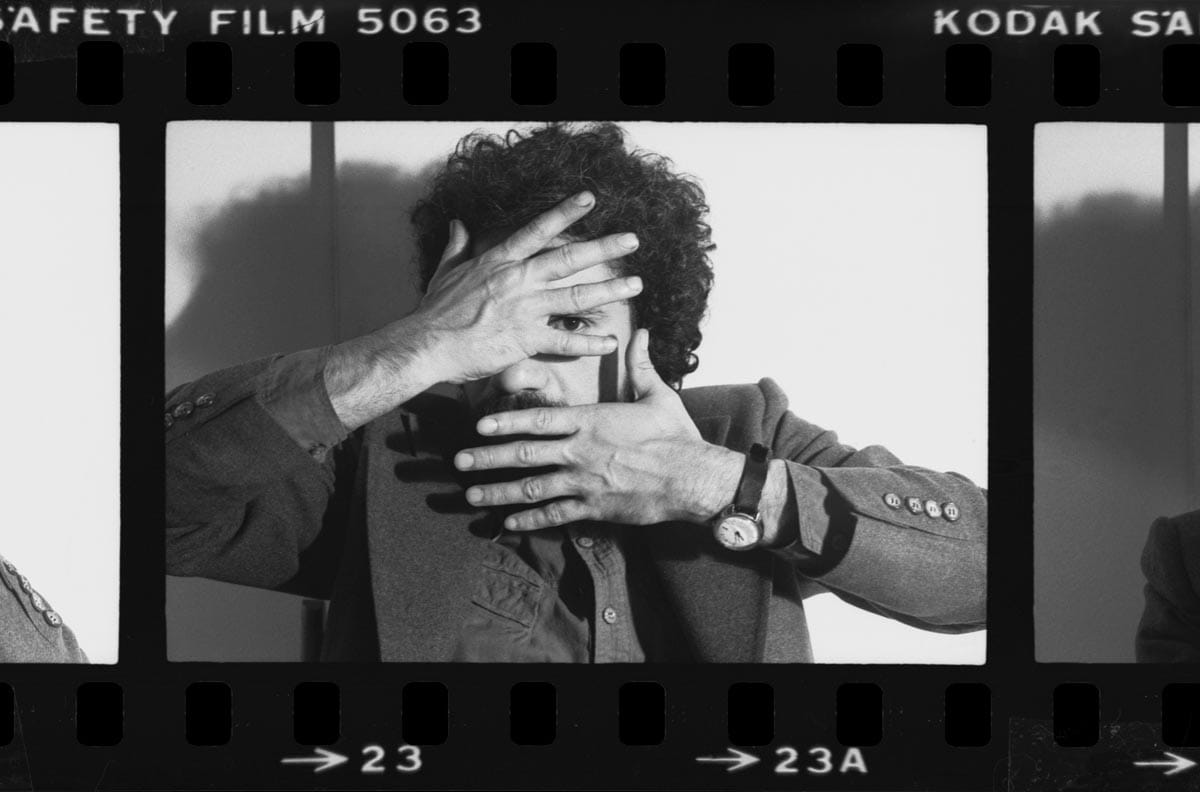
A Revolution on Canvas
Nickzad Nodjoumi (b. Iran), artist, subject
Sara Nodjoumi (b. United States to Iranian parents), director
Till Schauder (b. United States to German parents), director
Artist Nickzad (Nicky) Nodjoumi is known for his powerful and often provocative paintings over the past 50 years that address politics, history, power and corruption. Directed by Sara Nodjoumi and Till Schauder, A Revolution on Canvas explores two narratives concurrently. On the surface, it is an inquiry into the whereabouts of a series of Nodjoumi’s paintings exhibited at the Tehran Museum of Contemporary Art that compelled his exile from Iran; on a deeper level, it is an exploration of how Nodjoumi’s art and activism have impacted his relationships with his family—particularly his daughter, co-director Sara Nodjoumi, and his longtime wife and creative soulmate Nahid Hagigat, a trailblazing and celebrated artist in her own right. During the search, Sara, drawing on disarmingly frank conversations with both her father and mother, traces a timeline of events to understand the circumstances that led to her family’s personal history echoing the treacherous path of many immigrant families caught in the crossfire of politics and life.
A Revolution on Canvas nimbly explores the multiplicity of powerful art: how it can outwardly serve as a tool for resistance and protest while providing the artist with an outlet for healing trauma.
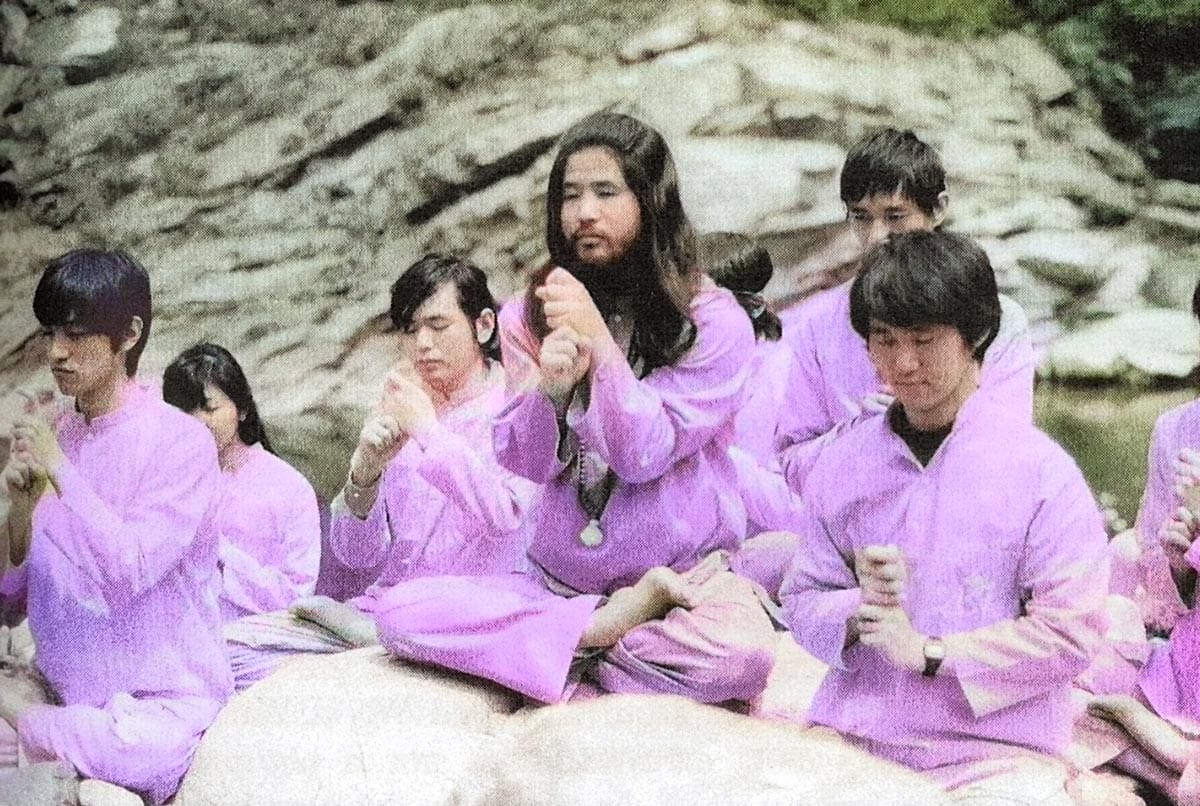
AUM: The Cult at the End of the World
Chiaki Yanagimoto (b. Japan), producer and director
AUM: The Cult at The End of the World marks experienced producer and distributor Chiaki Yanagimoto’s directorial debut. Yanagimoto and her co-director Ben Braun’s directorial choices set this documentary about Aum Shinrikyo apart from other films that explore cults and coercive organizations. AUM: The Cult at The End of the World focuses on the activities that should have raised alarms as the organization grew, and how the sensationalization and romanticization of the cult by Japanese media enabled Aum’s more sinister actions to go overlooked. Through archival news footage and thoughtful interviews, the directors tell a cautionary tale of how easily a dangerous group can grow to power.
In addition to her work on Aum, Yanagimoto will be at HIFF to present filmmakers whose films enjoyed international release from her company’s new distribution arm, SAKKA. Based in Los Angeles, she founded SAKKA to bring Japanese independent films and contemporary Japanese cinema to wider audiences around the globe.
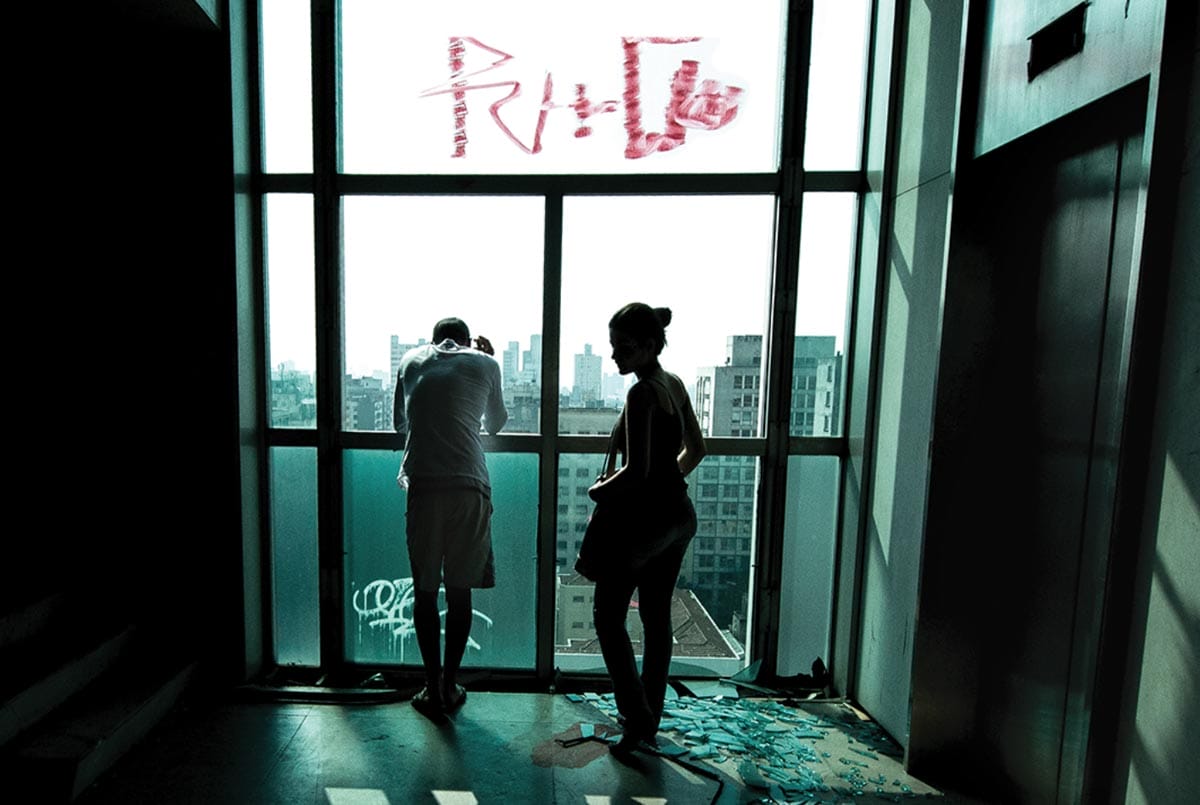
Skin of Glass
Denise Zmekhol (b. Brazil), director
Skin of Glass reckons with the director’s relationship to her father, architect Roger Zmekhol, and the political and economic history of Brazil through the lens of her father’s masterwork, the Pele de Vidro (“Skin of Glass”) building in downtown São Paulo. Designed in 1960, the building exemplified the optimism of the country’s young democracy: Brazil’s economy was thriving, enabling artistry and innovation to similarly thrive. Following the coup of 1964, the building’s history reflects much of Brazil’s own history: from glory days, to dictatorship, to a reinvention as democracy was once again established in 1985. In 2013, the Pele de Vidro became the site of a housing occupation, serving as a home for hundreds of Brazilian citizens in need of shelter. As Zmekhol explores the past and present of the building and its relationship to São Paulo, she reckons with loss, longing and the concept of home: a powerful lens that illuminates the processes of grief and transformation.
Related News
Documentary Filmmaker Ramona Diaz Speaks Truth to Power

Van Tran Nguyen’s “The Motherload” skewers the absurdity of war films

New American Perspectives at HIFF 44
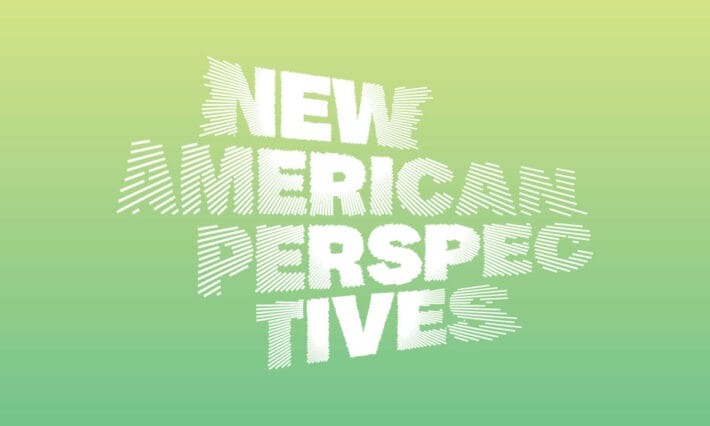
You may also be interested in
Hawai'i International Film Festival

Hawai'i International Film Festival

Hawai'i International Film Festival
